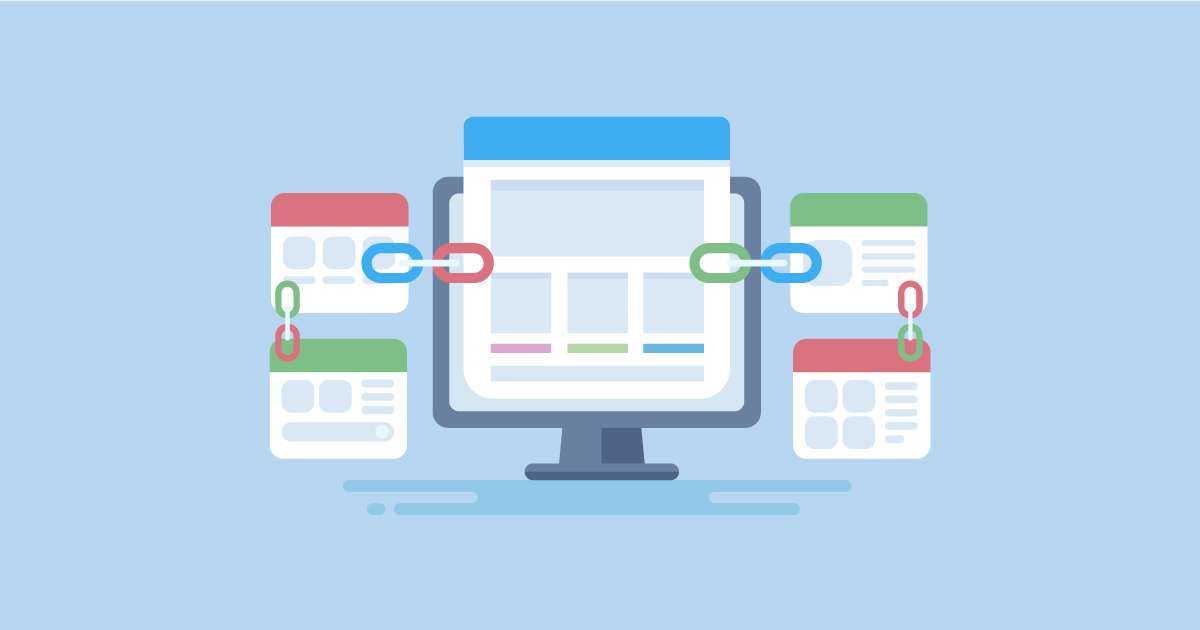How to Perform a Link Audit? 10 Steps to Follow
After hiring a link building agency, you must keep a track of the performance on your website. Whether you have been assigned a new SEO client or are responsible for the SEO of your company’s website, you will need to perform a link audit. The reason for doing so is to check if the website is not in terrible shape before you go about working on it. This means you will have to ensure there are no spammy backlinks that could affect the site’s credibility in the future or, worse, incur a Google penalty.
When it comes to a backlink audit, it is no different from buying a home. Once purchased, you will want to decorate and renovate it, but that does not mean you buy a house that is on the verge of collapsing. So you will thoroughly check your potential home, looking for costly issues before you even think about bidding farewell to your hard-earned money.
Remember, a backlink audit is not just about finding spammy links. It will essentially provide an insight into what efforts need to be made in the future to make it stand aside from the rest of the crowd. So, what is a backlink audit? It is a comprehensive review of all the links pointing to your website, assessing their quality and relevance, and identifying any that may harm your site’s performance or reputation.
Without further ado, here are 10 steps backlink audit guide to follow in order to perform a link audit via ahrefs.
Table of Contents
1 1. Compare your Backlink Profile to the Competition
2 2. Compare your Backlink Acquisition rate to that of the Competition
3 3. Look for Link Spikes to identify negative SEO Attacks
4 4. Identify Spammy Links from CTLDs
5 5. Look for Spam in your Anchor Text Profile
7 7. Identify the Worst and Best Websites linking to your Website
8 8. Look for Spam in the Full Anchors Report
9 9. Look for Backlinks from C-Class IPs
10 10. Review the Backlinks Report in its Entirety
- Compare your Backlink Profile to the Competition
First and foremost, you will need to start with the basics. You need to ask yourself how many referring domains and backlinks you have to link to your website.
Using ahrefs, you will find all the information you need regarding referring domains and backlinks. The numbers may seem quite impressive, but until you don’t compare them with your competition, there is no point in boosting your ego.
Use the same tool to assess your competition, and pay more attention to referring domains. It is what will allow you to determine whether a site is doing good or not, when compared to your own referring domains numbers. Additionally, you can perform a free backlink audit with free online backlink audit tools.
- Compare your Backlink Acquisition rate to that of the Competition
Going through raw numbers is always a good start, but it will offer little context. For instance, it will not be able to tell you whether the site has consistent links built over the years or not. Additionally, it will not clarify whether the competition has acquired new links faster than your own website.
All of this can be found by checking out the referring domains graph. What is great is that the graphs are updated regularly, and since they reveal solid numbers, it is easier to see the growth or decline of your backlinks between two dates of your choosing.
- Look for Link Spikes to identify negative SEO Attacks
Using the referring domain graphs is pretty simple. What is interesting is that it can also be used to identify negative SEO attacks. If you are wondering what negative SEO means, it is actually the opposite of positive SEO. This could be carried out by competitors to demote your site by plastering spammy links left, right, and center.
- Identify Spammy Links from CTLDs
While analyzing your backlinks, if you come across links from sites from .gq or .cn, you may assume it is spam. However, that is not always the case, as you can use the CTLD graph to see the distribution of your backlinks.
Apart from links from .net and com, you will come across a few from .cn and other less popular domains, but there is nothing to worry about. You have to consider the fact that if you are targeting a Chinese audience, you will be leaving links on .cn domains. So, really, it all depends on the context. If things look off, then you should investigate things further to find toxic backlinks.
- Look for Spam in your Anchor Text Profile
Most people and sites will link to your website using branded anchor text, making sure it is as natural as possible.
You will still need to investigate your anchor text profile to make sure referring domains use branded anchor text. As long as branded anchor text is being used, you can be confident about having a non-spammy profile. However, if you come across non-branded anchors or crude language, then you should analyze the complete Anchors report.
If the report illustrates how unbranded keywords like short-term loans, buy Viagra, casino affiliate, etc, then you have a problem in your hands. Of course, it is not something that can’t be dealt with, but it needs to be dealt with immediately before it takes on your website’s credibility. To address this, you may need to disavow bad backlinks to ensure your site maintains its integrity and search engine ranking.
- Find Wasted Links
Building links is not easy. It can take a considerable amount of time before you have good backlinks, which is why it is important to make sure that none of your backlinks go to waste.
You can make this possible by using the Best by Links report. The report shows pages on your websites with the most backlinks. The report is great if you want to find out more about the types of content and topics that attract links to your website. The same report can also be extracted for your competitors, thus giving you even more ideas for greater links. At the same time, the report allows you to filter broken pages, too.
Since broken pages result in 404 errors, the backlinks they contain go to waste. In this case, they should be fixed. Even if a page is not broken, and they do not bring in much traffic, then chances are they need to be updated with new content and re-optimized.
- Identify the Worst and Best Websites linking to your Website
A link building service can help, but there are good and bad websites that may be linking to your website. The Referring Domains report will give you a list of places that link back to your site. This can be quite insightful as you will see real opportunities when looking for the worst and best-referring websites.
The report is not only great for finding out the bad stuff, you can also find out who your super fans are. Note down who these people are, and keep in contact with them to build relationships.
- Look for Spam in the Full Anchors Report
You already know a bit about spammy anchor texts from before, but what you do not know is there is a Full Anchors report that will give you a comprehensive list of anchors so that you can check for anything suspicious.
Going through the report can be overwhelming, even if you filter it. In this case, you can use the search function to look for mentions that are spammy or toxic.
- Look for Backlinks from C-Class IPs
Every website has its own dedicated IP address, and it looks something like 192.168.12.1.
The first three numbers are referred to as a class. The second three numbers are b-class and so on and so forth. This is important because websites that share the third three numbers, AKA c-class, are neighbors. Simply put, they share the same web host.
With the Referring IPs report, you can see all referring domains based on the network they belong to. There is a high probability that sites sharing C-class IPs are owned by the same person. Even though there is nothing wrong with owning multiple websites, Google has targeted these websites in the past and doesn’t consider them to be white-hat. Keeping this in mind, such links should be disavowed or removed right away.
- Review the Backlinks Report in its Entirety
So far, you have learned to use different reports in ahrefs to identify backlink-related opportunities and issues. But you still need to review the full backlinks report.
The purpose of doing so is to identify opportunities and broader issues first to guide you when analyzing the entire backlog of backlinks, which can be in the thousands.
You can start by auditing your entire site at once, although it is not recommended. Basically, you will not be able to get valuable insights. Since there is so much information, it is better if you audit on a page-by-page basis using the Best by links report.
On the other hand, look for commonalities between the most fruitful links. This will give you a better understanding of why people are linking to your website. Once you understand that, you will have new prospects to work with.
There is no denying the fact that auditing your backlinks can get complicated, especially if you have a ton of data to go through using different tools. Hopefully, this backlink audit guide has given you all the information and tips you will need using just one tool, ahrefs, to conduct an effective audit, resulting in valuable insights.
Remember, auditing your own website may just not be enough. You should do the same for all your competitors. Of course, it will require a considerable time, but you will learn a lot of things you were not aware of before. Moreover, you will come across new strategies and tactics that were not thought of before. Rest assured, it will give you the edge you need to stay ahead of the curve without affecting your website’s credibility or existing traffic.








